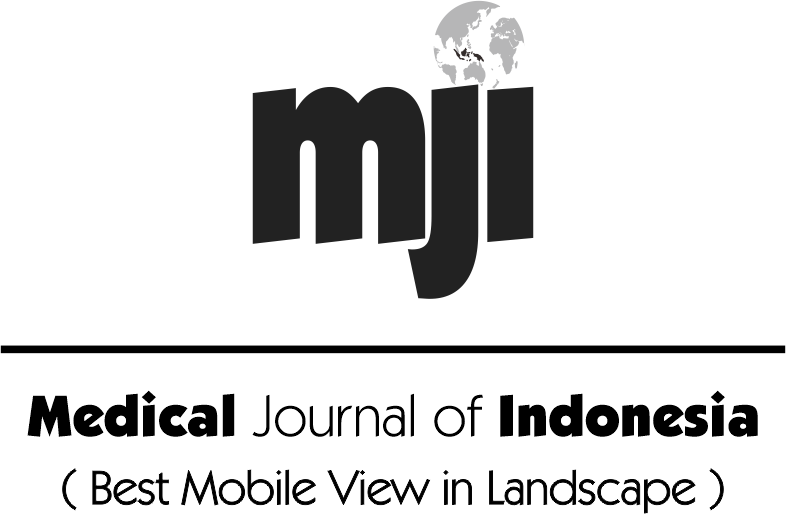The pursuit of precision in medicine is increasingly shaped by context-specific research that addresses the nuanced needs of diverse patient populations. This issue brings together a compelling collection of clinical studies, reviews, and case reports that span geriatrics, oncology, nephrology, ophthalmology, endocrinology, urology, and neurosurgery. Each contribution not only advances its respective field but also underscores the importance of localized, evidence-based approaches in global health.
The study about frailty in hospitalized geriatric patients highlights frailty as a highly prevalent and clinically significant syndrome among older adults. The authors identify cognitive decline and multimorbidity as key correlates, with mini-mental state examination scores, Charlson comorbidity index, total protein levels, and geriatric syndromes such as dementia, falls, incontinence, and polypharmacy serving as critical indicators.¹ The study also points to the potential of inflammatory biomarkers for early detection, reinforcing the need for comprehensive frailty screening in hospital settings.
In the realm of oncologic imaging, the study “Tumor apparent diffusion coefficient value and ratio in magnetic resonance imaging on cervical cancer” offers valuable insights.2 Despite a limited sample size, the authors demonstrate a significant difference in median tumor apparent diffusion coefficient (ADC) values between early- and late-stage cervical cancer, with a proposed cut-off of 0.750 × 10⁻³ mm²/s.² These findings suggest that ADC values could serve as non-invasive biomarkers for staging and treatment planning, potentially improving prognostic accuracy and therapeutic outcomes.
Addressing the challenges of pediatric chronic kidney disease in Indonesia, an innovative study on a safer catheter insertion technique is presented by laparoscopic Tenckhoff catheter insertion technique with an Alken telescopic metal dilator. This technique reduced complications such as leakage and achieved a low early peritonitis rate (6%). The findings advocate for standardized insertion protocols and call for larger, multicenter studies to validate and refine this promising method.³
Measuring the outcome of medical intervention and treatment is not only a trend in medicine, but rather a new wave with which the medical community could communicate with “the same language.” Cultural adaptation in quality of life assessment of questionnaire to measure the impact of treatment for thyroid cancer using thyroid cancer-quality of life–Indonesian version (ThyCa-QoL-ID) exemplifies the importance of culturally sensitive tools in patient-reported outcomes. Through rigorous translation and validation processes, the ThyCa-QoL-ID emerges as a reliable instrument for assessing the quality of life among Indonesian thyroid cancer patients.⁴ This work contributes significantly to the global literature on health-related quality of life measurement and supports more patient-centered care in oncology.
A unique focus of study on tuberculous uveitis (TU) in Jakarta provides a detailed epidemiological and clinical overview of TU cases. Predominantly affecting middle-aged women, the condition was most commonly diagnosed as panuveitis, with interferon-gamma release assay as the primary diagnostic tool.⁵ Treatment typically involved systemic steroids and anti-tuberculosis therapy, highlighting the need for heightened clinical awareness and standardized management protocols in endemic regions.
A case report on fertility preservation in pediatric ovarian tumor presents a successful five-year follow-up. Despite ongoing debate regarding oncological safety, this case supports the viability of conservative management in select patients. The report also underscores the need for standardized histopathological and surgical protocols to ensure consistent outcomes.⁶
Perianesthetic management in epilepsy surgery for a pediatric patient highlights the critical role of anesthetic strategy in optimizing surgical outcomes. The use of target-controlled infusion with remifentanil and propofol is recommended for its minimal interference with neurophysiological monitoring, supporting better seizure control and neurological recovery in patients with medically resistant epilepsy.⁷
From clinical studies, spanning geriatrics, oncologic imaging, pediatrics disease, an outcome measurement tool for thyroid cancer and attention to specific infection in ophthalmology, and recognizing two case studies of pediatric ovarian tumor and epilepsy surgery by innovative anesthesia approach, finally a scoping review article on the current evidence on the efficacy and safety of extracorporeal shockwave therapy presents another perspective. While the therapy shows promise in restoring urinary function through diverse biological mechanisms, the authors emphasize the need for further clinical studies to elucidate its molecular effects and optimize treatment protocols.⁸
Together, these studies reflect a shared commitment to advancing clinical care through innovation, cultural adaptation, and rigorous methodology. Whether addressing frailty in aging populations, refining surgical techniques, or validating patient-centered tools, each contribution enriches our collective understanding and brings us closer to more equitable, effective, and personalized healthcare.
REFERENCES
- Elsorady KE, Al Adrosy TI. Prevalence and factors associated with frailty among hospitalized geriatric patients at a tertiary hospital in Egypt. Med J Indones. 2025;34(2):92–8.
- Siregar TP, Wanandi SI, Darmiati S, Kusuma F, Sekarutami SM, Lisnawati, et al. Tumor apparent diffusion coefficient value and ratio in magnetic resonance imaging on cervical cancer. Med J Indones. 2025;34(2):99–140.
- Situmorang GR, Alfarissi F, Raharja PA, Rodjani A, Wahyudi I. Laparoscopic Tenckhoff catheter insertion technique with Alken telescopic metal dilator in pediatric population. Med J Indones. 2025;34(2):77–82.
- Pramono LA, Shatri H, Subekti I, Prihartono NA, Hatma RD, Kurniawidjaja M, et al. Validation and adaptation of the Indonesian version of thyroid cancer quality of life questionnaire. Med J Indones. 2025;34(2):105–9.
- Mahayani NM, Susiyanti M, Sjamsoe S, Utami AN. Clinical profiles and treatment evaluation of tuberculous uveitis in tertiary eye hospital in Jakarta. Med J Indones. 2025;34(2):83–91.
- Utami TW, Nasution HH, Oktalia A, Kusuma F, Purwoto G. Conservative surgery for stage IC2 mucinous borderline ovarian tumor: a five-year follow-up case report. Med J Indones. 2025;34(2):127–31.
- Yeap BT, Koo TH, Ang SY, Hassan MH. Perianesthetic management in a teenager with focal cortical dysplasia who underwent an epilepsy surgery. Med J Indones. 2025;34(2):122–6.
- Handayani Y, Yufika A, Lestari LI, Setiono S. Extracorporeal shockwave therapy in managing lower urinary tract dysfunction: a scoping review. Med J Indones. 2025;34(2):132–40.
